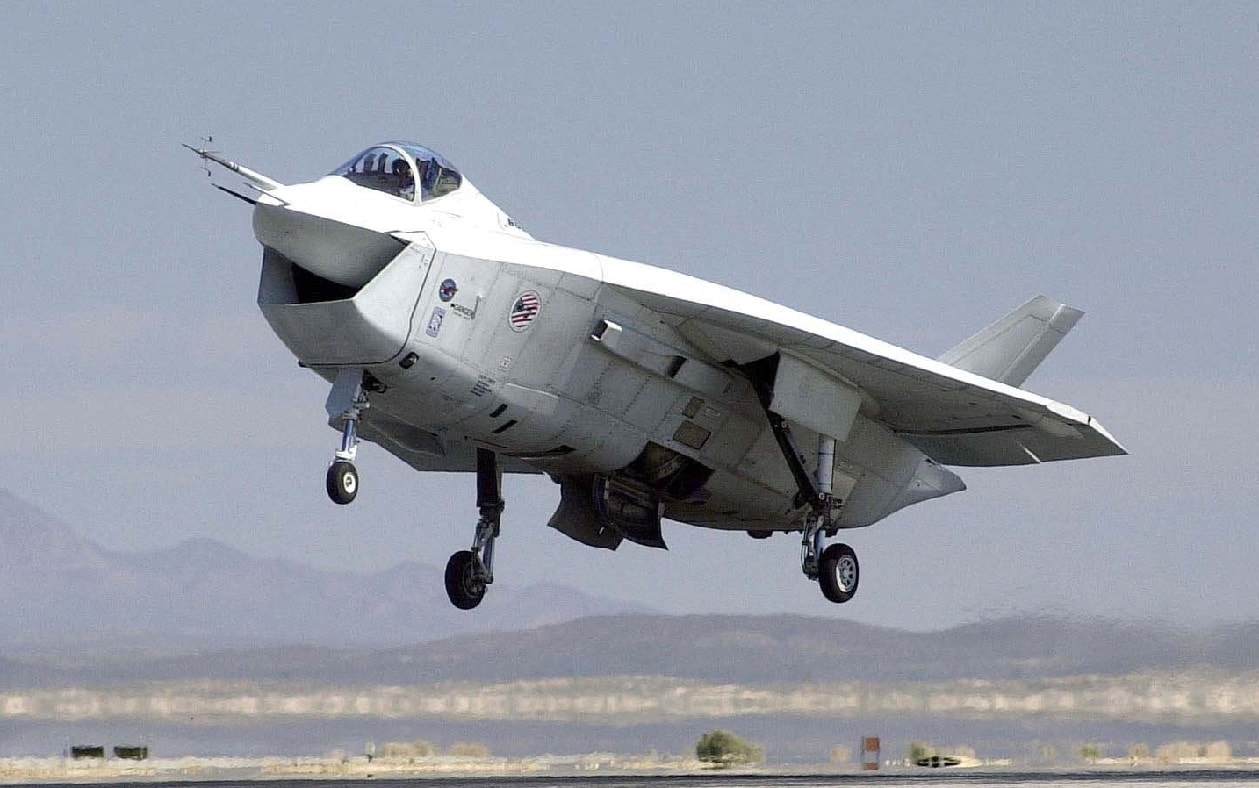The Air Force has two very smart and capable stealth fighters in the F-22 Raptor and F-35 Joint Strike Fighter. However, Boeing offered the X-32, or what would have been the B-32 stealth fighter. Here is why the Air Force passed on it: In the 1990s, the United States initiated a watershed procurement competition known as Joint Strike Fighter (JSF). JSF represented an ideological shift in the way U.S. air power was structured. Before JSF, throughout the Cold War, individual airframes were designed and fielded to provide specific, discreet services. For example, the A-10 was built singularly to provide close-air support; the F-15 was built singularly to provide air superiority; the F-104 was built singularly to intercept; the A-6 was built singularly to bomb.
While designing airframes specifically for a primary task resulted in airframes that were exceptionally well suited for their primary task, maintaining that ideologically was expensive and logistically complicated. Seeking a cheaper, smoother, more efficient force structure, the JSF competition was the effort to create a jet that could do everything, a jack of all trades that would simplify procurement, training, maintenance, everything.
And JSF wasn’t intended to simplify things just for the Americans, but for her allies, too – the UK, Italy, Canada, Australia, the Netherlands, Denmark, Germany, and Norway. All would use the same jet, something with twenty-first-century features like enhanced network connectivity and a low radar cross-section.
Remembering the Runner Up
From four proposals, two airframes were chosen for flight testing and pitted against each other. The winner would earn the lucrative JSF contract. The first is well remembered as the program’s winner, Lockheed’s X-35, which has since been developed into the preeminent fifth-generation fighter, the F-35 Lightning II. The second, the “also-ran” Boeing X-32, has mostly faded into obscurity and is remembered above all for the jet’s ungainly appearance.
Boeing’s JSF entry featured a distinctive engine intake – a single gaping, yawning, angular intake that sat just below an unusually truncated nose. The jet’s fuselage, which sat below delta wings, made a bloated, sagging impression. While futuristic looking, the X-32 was objectively ugly and appeared unathletic.
Of course, appealing aesthetics had not been Boeing’s objective when crafting the X-32. To win the JSF contract, Boeing hoped to appeal to the Department of Defense with low manufacturing and life-cycle costs. Accordingly, Boeing built the X-32 around a large, one-piece carbon fiber delta wing that could be used as the base of multiple X-32 variants. And Boeing included a simple direct-lift thrust vectoring system that could be outfitted conveniently with a thrust vectoring nozzle (on the appropriate variant) in order to meet the USMC’s STOVL requirements. Cheap and simple – an ideology aligned with the JSF itself.
Testing the JSF Submission
The X-32’s flight testing wasn’t always simple, however. To demonstrate both STOVL and supersonic flight, the X-32 needed to be reconfigured between tests – basically, from STOVL mode to supersonic mode. Lockheed’s X-35, on the other hand, could transition from STOVL and supersonic configurations mid-flight.
Powered by one Pratt & Whitney YF-119 turbofan, which could provide 43,000 pounds of thrust (with afterburner engaged), the X-32 could hit Mach 1.6. The jet also carried a cannon, either a 20 mm M61A2 or a 27 mm Mauser BK-27. The X-32 could also carry weapons both internally or externally.
The JSF deciders weren’t impressed with Boeing’s entry. Choosing Lockheed’s X-35, the X-32 was relegated to the boneyard before ever entering production. Only two X-32s were ever built. The A-variant was loaned to the National Museum of the United States Air Force where the novel jet was left outside and neglected. The plane’s condition deteriorated, obviously, after several years exposed to the elements.
The X-32 B-variant is on display at the Patuxent River Naval Air Museum. The two X-32s, on display and deteriorating, are an ignoble reminder of having lost the JSF competition – the most important jet contract of the last half-century.
Harrison Kass is the Senior Defense Editor at 19FortyFive. An attorney, pilot, guitarist, and minor pro hockey player, he joined the US Air Force as a Pilot Trainee but was medically discharged. Harrison has degrees from Lake Forest College, the University of Oregon, and New York University. He lives in Oregon and listens to Dokken.

